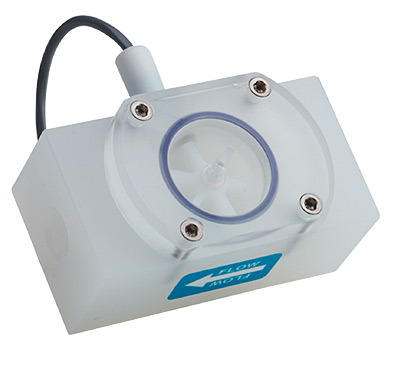AMAZON multi-meters discounts AMAZON oscilloscope discounts
This type of flow meter is usually the most accurate in that the flow is broken into segments and each segment is measured as the fluid (liquid or gas) moves through it. One example of a positive-displacement flow meter uses a piston pump. The volume of the piston is known, and all of the fluid flows through the piston pump. This allows the total volume of fluid to be measured by counting the strokes of the piston. For instance, if the piston has a volume of 0.1 gal, and it makes 200 strokes per minute, the flow would be 20 gpm. Another type of positive displacement flow meter uses a set of oval gears (lobes) that pumps a specific volume of fluid each time the gears mesh. The faster the flow moves, the faster the gears rotate. The number of rotations are counted and the flow rate can be calculated because the volume of fluid that is pumped during each revolution of the lobes is known. ill. 1 shows a positive displacement flow meter.

Above: ill. 1. A gear-type positive displacement flow meter from Omega
Engineering. The gears (lobes) rotate as fluid flows through them and the number of rotations are counted. Since the volume of fluid that
is trapped between the gears is known, the flow rate can be calculated
from the number of rotations.
The nutating disk is another type of positive displacement flow meter.
The nutating disk is a movable disk that is offset so that it makes a
concentric circular motion each time it rotates. The housing for the disk
is perfectly round, so that each time the disk rotates, its oval path
will trap a specific amount of fluid. Since the volume of trapped fluid
is known, the number of revolutions the disk makes can be counted and the flow rate can be calculated.